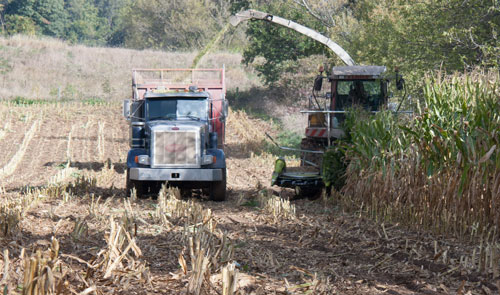
by Amanda Smith, Associate Editor
Across much of the U.S., corn silage harvest is slowly wrapping up. Poor weather conditions during last year's growing season left corn silage inventories tight for many producers. Due to this, there may be a pressing need to feed the newly harvested crop this fall. But, our cows will reap the benefits if we can hold off on tearing back the plastic for a few weeks to months.
Ideally, corn silage should be stored for at least three to four weeks after harvest before feeding. Allowing the crop to ensile for three to five months, though, improves the starch digestion of the grain.
In the Miner Institute Farm Report, Shane Fredin explained why this happens. As fermentation begins, enzymes from silage bacteria degrade zein proteins that surround starch granules. The longer corn is ensiled, the greater the extent of protein breakdown, resulting in starch that is more accessible to rumen microorganisms.
When compared to newly harvested corn silage, corn silage ensiled for three to five months has been shown to gain 10 to 15 percentage units in starch digestibility, noted Fredin.
If feeding the new crop is unavoidable, you can monitor total tract starch digestibility with fecal starch analysis. A digestibility drop of 1 percent is estimated to result in a 0.72-pound reduction in milk yield. If digestibility is below 93 percent, ration reformulation should be considered. This can be done with higher high-moisture corn inclusion rates or using more finely ground corn.








